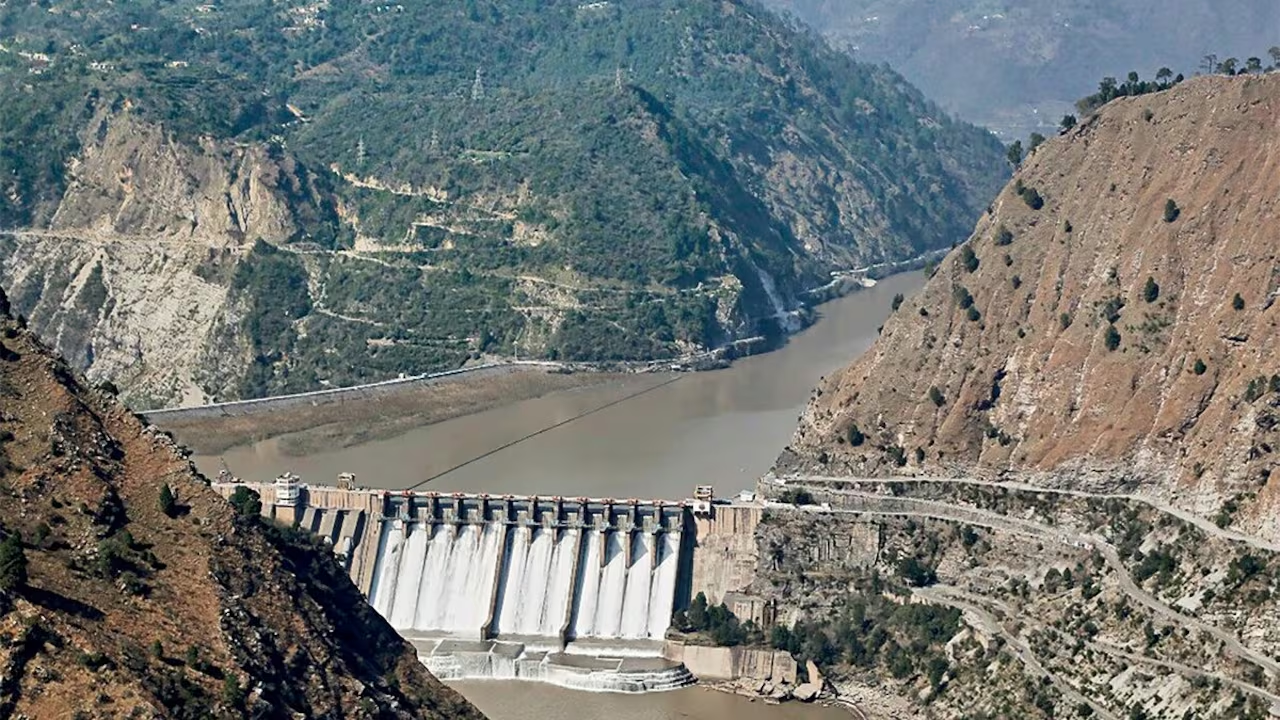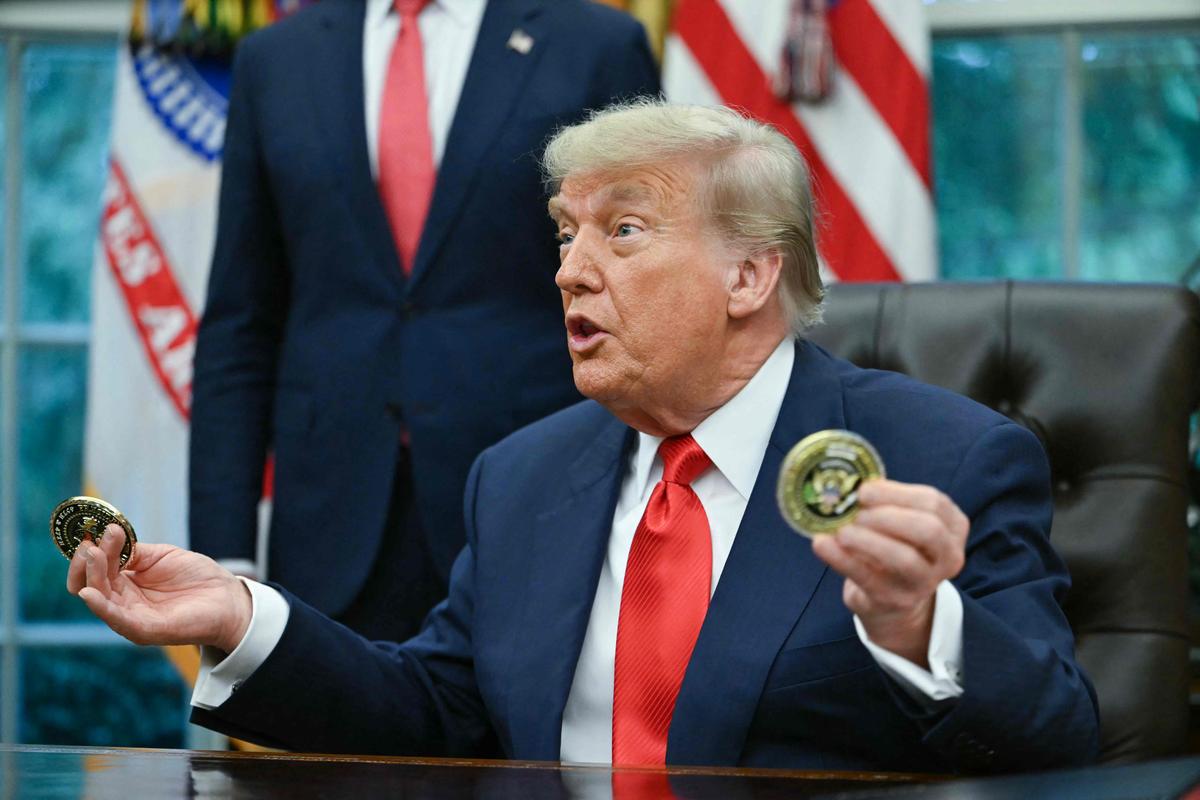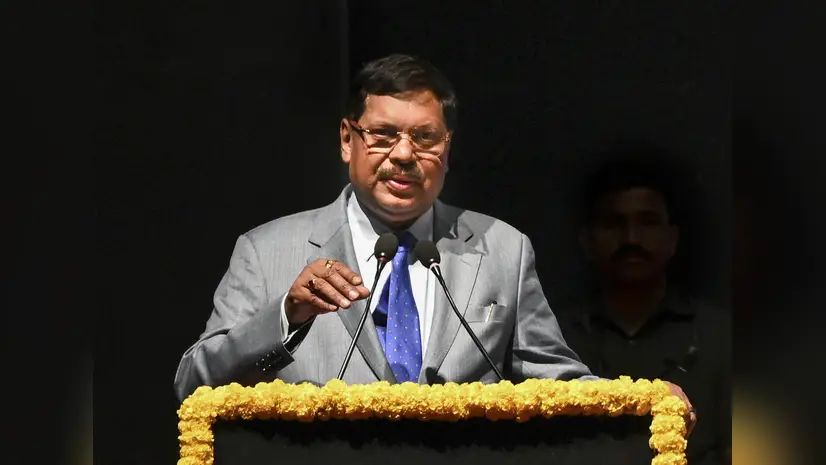- Courses
- GS Full Course 1 Year
- GS Full Course 2 Year
- GS Full Course 3 Year
- GS Full Course Till Selection
- Answer Alpha: Mains 2025 Mentorship
- MEP (Mains Enrichment Programme) Data, Facts
- Essay Target – 150+ Marks
- Online Program
- GS Recorded Course
- Polity
- Geography
- Economy
- Ancient, Medieval and Art & Culture AMAC
- Modern India, Post Independence & World History
- Environment
- Governance
- Science & Technology
- International Relations and Internal Security
- Disaster Management
- Ethics
- NCERT Current Affairs
- Indian Society and Social Issue
- NCERT- Science and Technology
- NCERT - Geography
- NCERT - Ancient History
- NCERT- World History
- NCERT Modern History
- CSAT
- 5 LAYERED ARJUNA Mentorship
- Public Administration Optional
- ABOUT US
- OUR TOPPERS
- TEST SERIES
- FREE STUDY MATERIAL
- VIDEOS
- CONTACT US
Nobel Prize in Physics 2023
Nobel Prize in Physics 2023
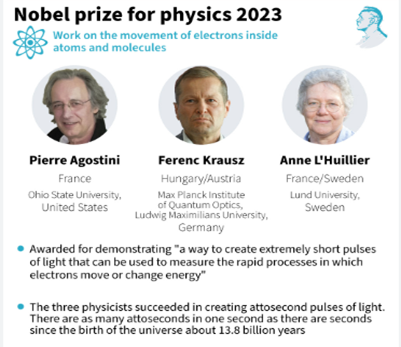
Latest Context:
Recently, the 2023 Nobel Prize in Physics has been awarded to three remarkable scientists: Pierre Agostini, Ferenc Krausz, and Anne L’Huillier for their pioneering work in experimental physics, specifically for their innovative methods in generating attosecond pulses of light.
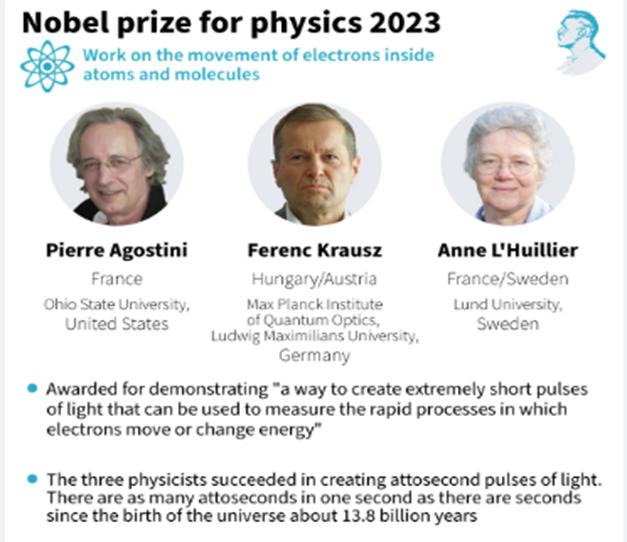
About Electron dynamics:
- Electron dynamics is like studying how tiny particles called electrons move and behave inside things like atoms, molecules, and solid stuff. These electrons are really small and move super quickly, so it's hard to see what they're doing directly.
- Imagine trying to take a picture of a racing car with a camera that takes a long time to snap the photo. The car would look blurry because it moves so fast. In a similar way, electrons move so fast that we used to have to use indirect methods to understand what they're up to.
- Atoms inside things like molecules move really fast, but we're talking about a very, very short amount of time – a millionth of a billionth of a second, which is super quick! Now, electrons inside these atoms move even faster. They work in an even tinier amount of time called an "attosecond," which is like a billionth of a billionth of a second. That's so fast that it's hard to even picture!
- An attosecond pulse is like a super short burst of light that only lasts for an incredibly tiny amount of time called an "attosecond." It's so quick that you can barely even imagine it!
How Scientists Created Attosecond Pulses of Light
- Background: Back in the 1980s, scientists were able to make very short bursts of light called femtosecond pulses. At that time, they thought femtoseconds were as short as light pulses could get. But they needed even shorter pulses to watch electrons in action.
- Advancements in Attosecond Pulse Generation:
- Anne L’Huillier's Breakthrough (1987):
- L'Huillier is one of just five women who have received the Nobel Prize in Physics.
- In 1987, Anne L’Huillier and her team in France did something amazing.
- They directed a special laser through a type of gas called a noble gas.
- This made something called "overtones," which were like waves of light.
- These overtones were even shorter than femtoseconds, and they were in the form of ultraviolet light.
- Scientists saw that when these short waves of light mixed together, they could either make the light stronger or make it disappear.
- By making their setup better, scientists could create really strong attosecond bursts of light.
- Pierre Agostini's Achievement (2001):
- In 2001, Pierre Agostini and his team in France made a bunch of 250-attosecond bursts of light.
- They used these bursts to do quick experiments and learn a lot about how electrons move.
- They combined these quick bursts with the original laser beam to learn even more about electrons.
- Ferenc Krausz's Breakthrough (Simultaneously):
- At the same time, Ferenc Krausz and his team in Austria found a way to pick out single 650-attosecond bursts from a group of them.
- It was like being able to choose one tiny moment from a super-fast movie.
- With this, they could measure how much energy electrons got when they were released from atoms very precisely.
- This was a big step forward in understanding electrons.
Applications of Attosecond Physics:
- Studying Fast Stuff: Attosecond pulses help scientists take pictures of super-quick things happening in atoms and molecules. This is super important in fields like materials science, electronics, and making reactions happen faster (catalysis).
- Helping Medicine: Attosecond pulses can be used in medical stuff to find tiny molecules really fast. This can make medical images better and help doctors diagnose things more accurately.
- Making Electronics Better: Attosecond physics might make electronic gadgets faster. So, your computers and phones could work even quicker!
- Fancy Pictures and Watching Stars: Using attosecond pulses, we can take super-detailed pictures and look closely at stuff. This can help in fields like biology and even studying stars in the sky.
Recent Nobel Laureates in Physics
- 2022:
- Alain Aspect, John F. Clauser, and Anton Zeilinger won for their experiments with special photons that helped us understand quantum stuff better.
- 2021:
- Syukuro Manabe and Klaus Hasselmann got the Nobel Prize for their work on understanding Earth's climate and predicting global warming.
- Giorgio Parisi won for figuring out how things behave when they're messy or shaky, from tiny atoms to big planets.
- 2020:
- Roger Penrose won for showing that black holes are real, as predicted by Einstein's theory.
- Reinhard Genzel and Andrea Ghez found a supermassive thing at the centre of our galaxy, and they won for it.
- 2019:
- James Peebles won for his ideas about how the universe started and how it's changing.
- Michel Mayor and Didier Queloz found a planet orbiting another star, and they won for that.
- 2018:
- Arthur Ashkin was awarded for inventing "optical tweezers" used in biology.
- Gerard Mourou and Donna Strickland developed a way to make super strong laser flashes, and they got the Nobel Prize.
- 2017:
- Rainer Weiss, Barry C. Barish, and Kip S. Thorne won for helping to create a detector that "hears" gravitational waves, which are like ripples in space.
Question: Why did Alain Aspect, John F. Clauser, and Anton Zeilinger receive the Nobel Prize in Physics in 2022?
A. For their work on studying black holes and their properties.
B. For their experiments with special photons that advanced our understanding of quantum phenomena.
C. For their contributions to climate modelling and predicting global warming.
D. For their discoveries related to the behaviour of subatomic particles.
Correct Answer: B. For their experiments with special photons that advanced our understanding of quantum phenomena.

